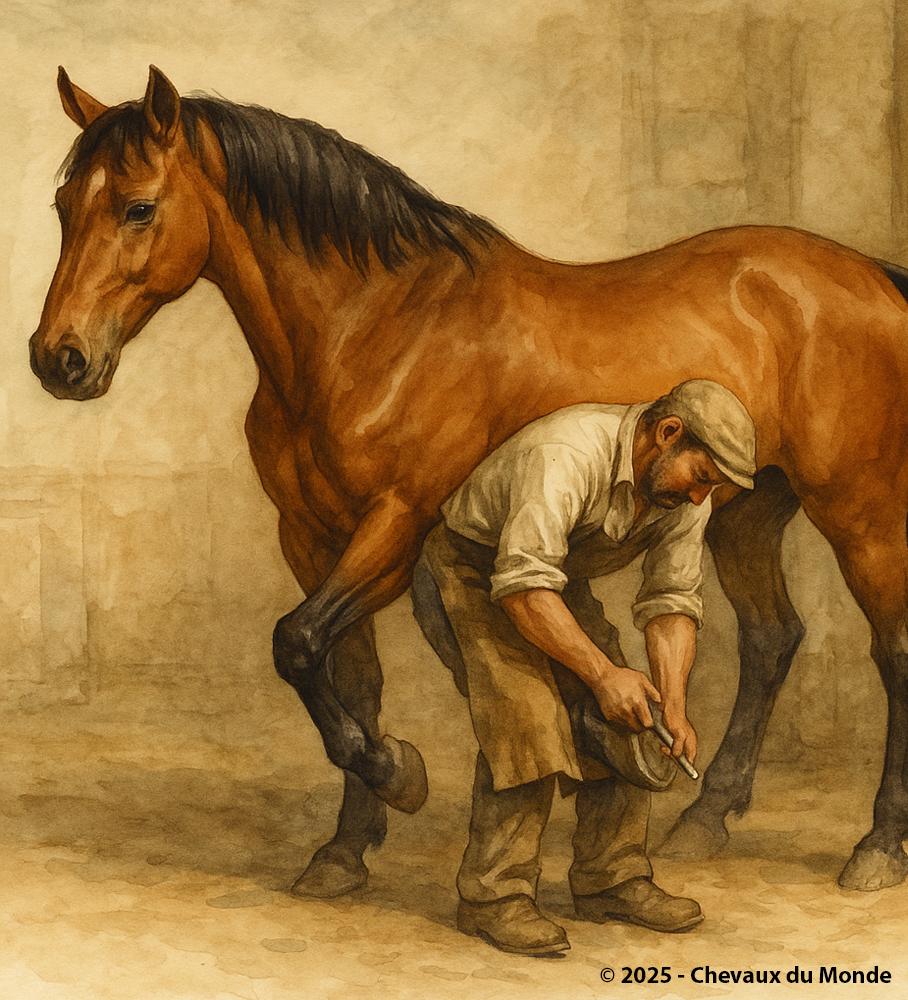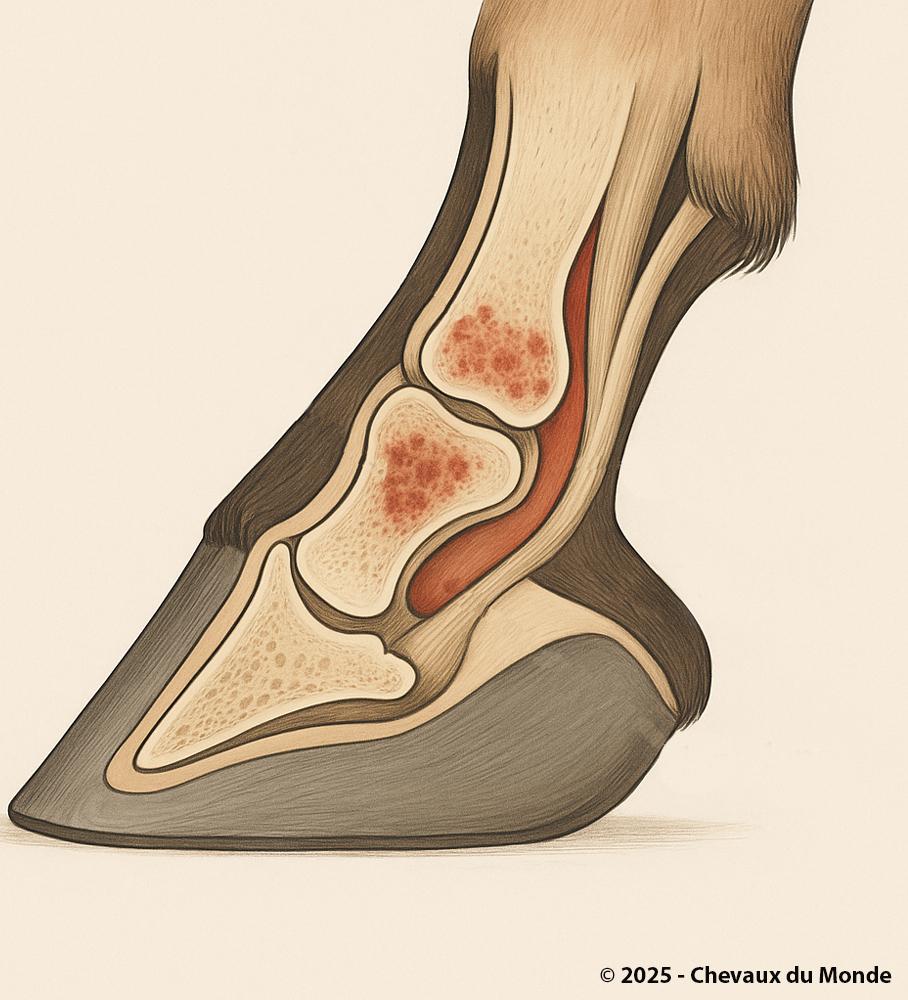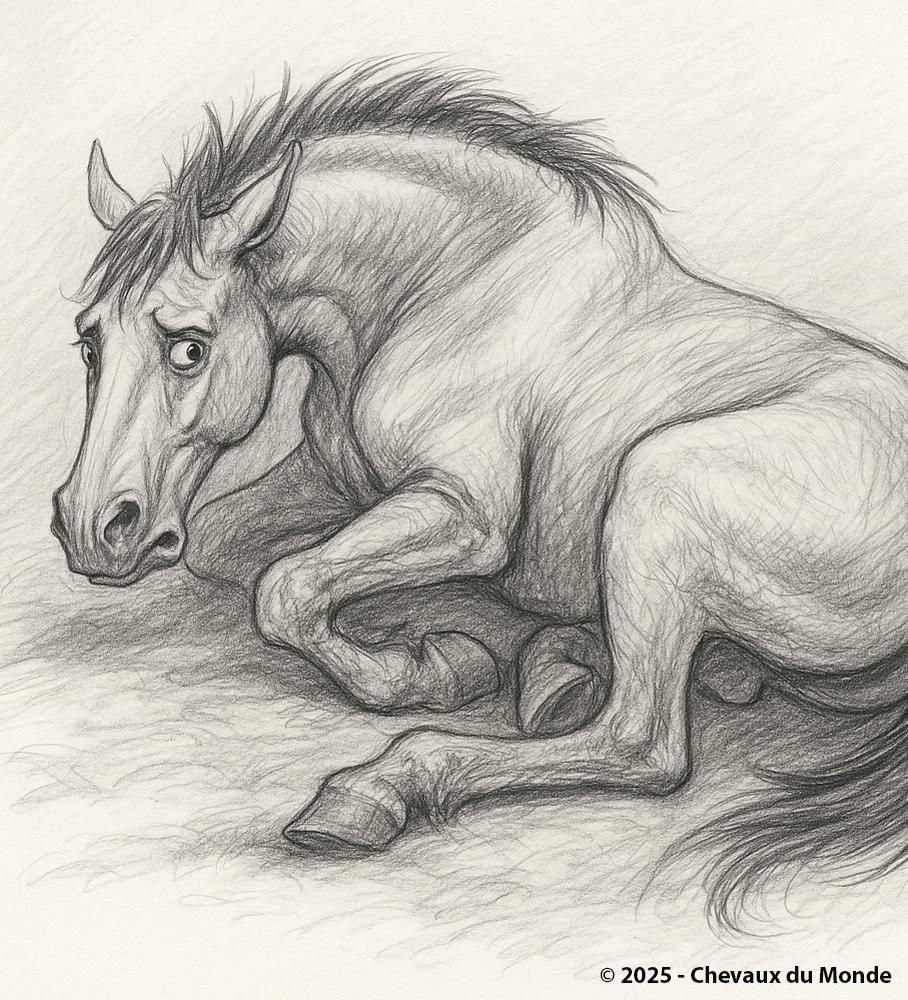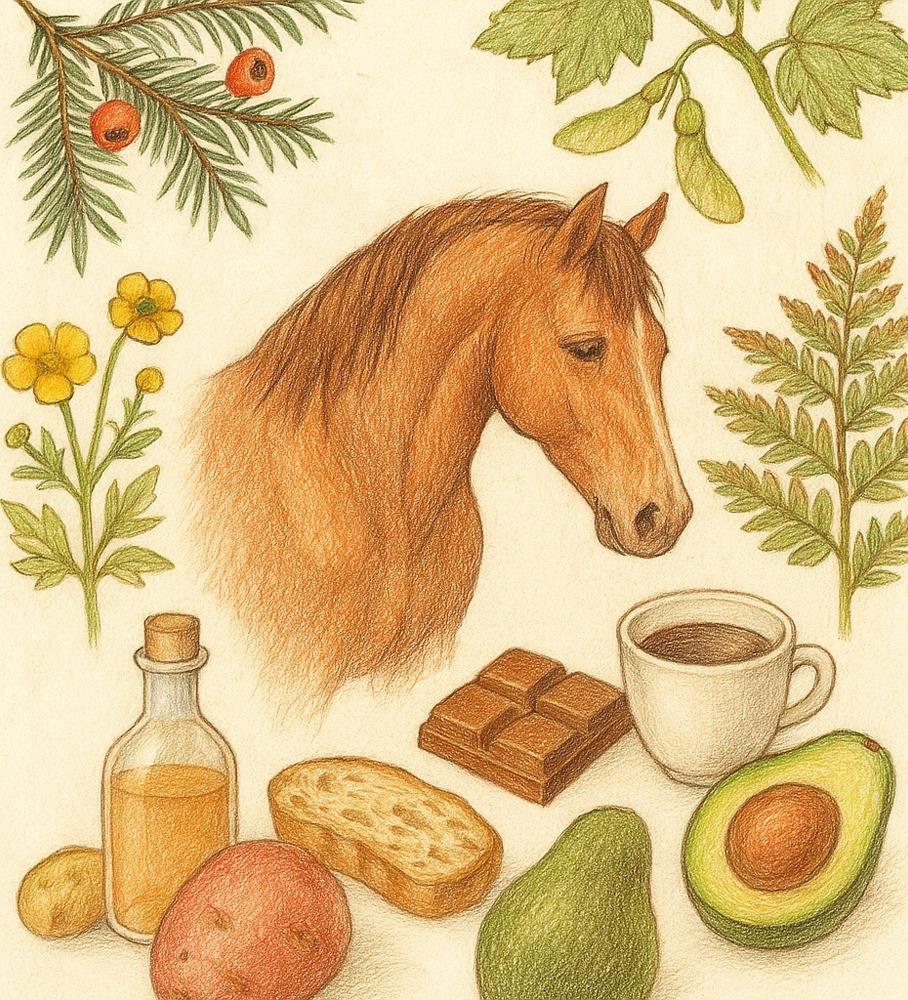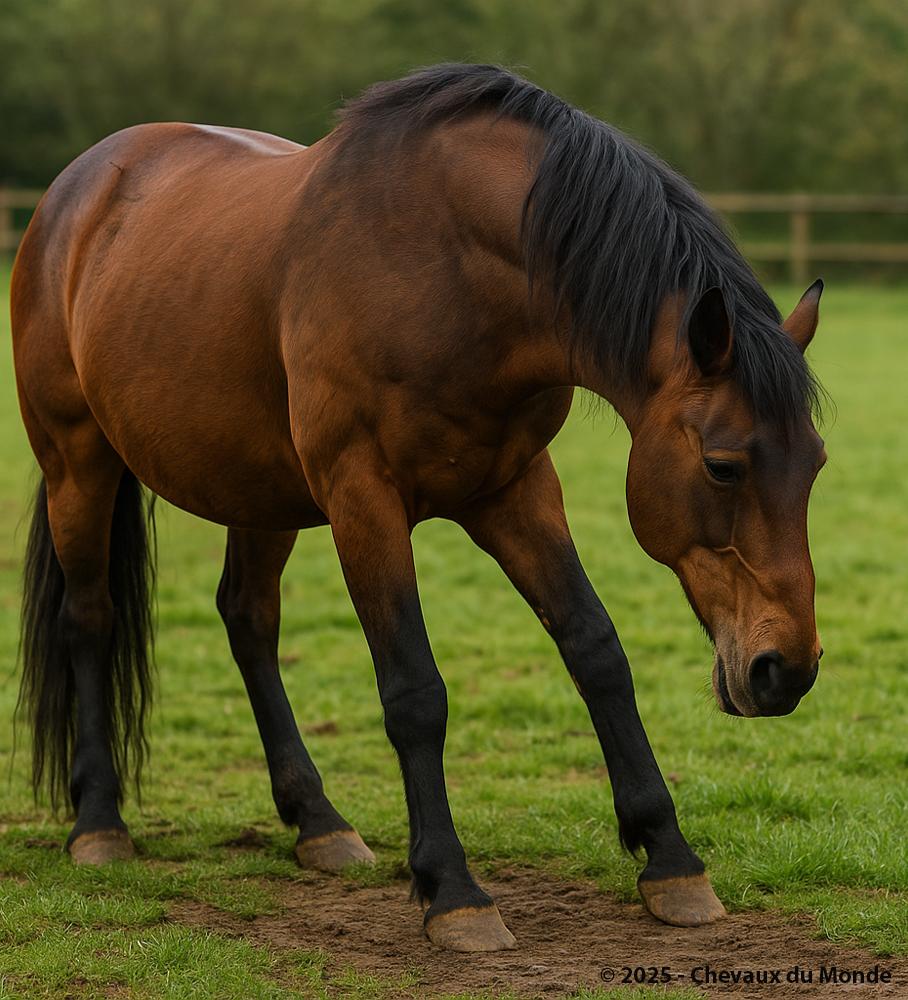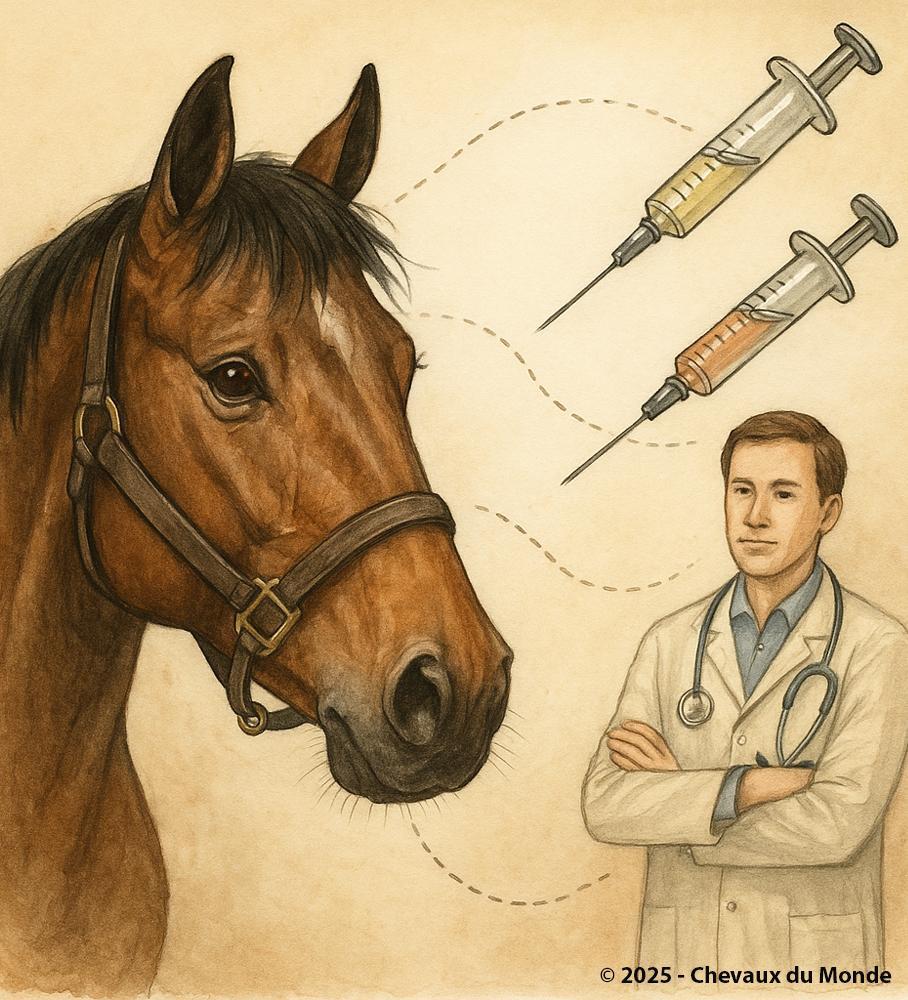RECOGNIZING SIGNS OF PAIN IN HORSES
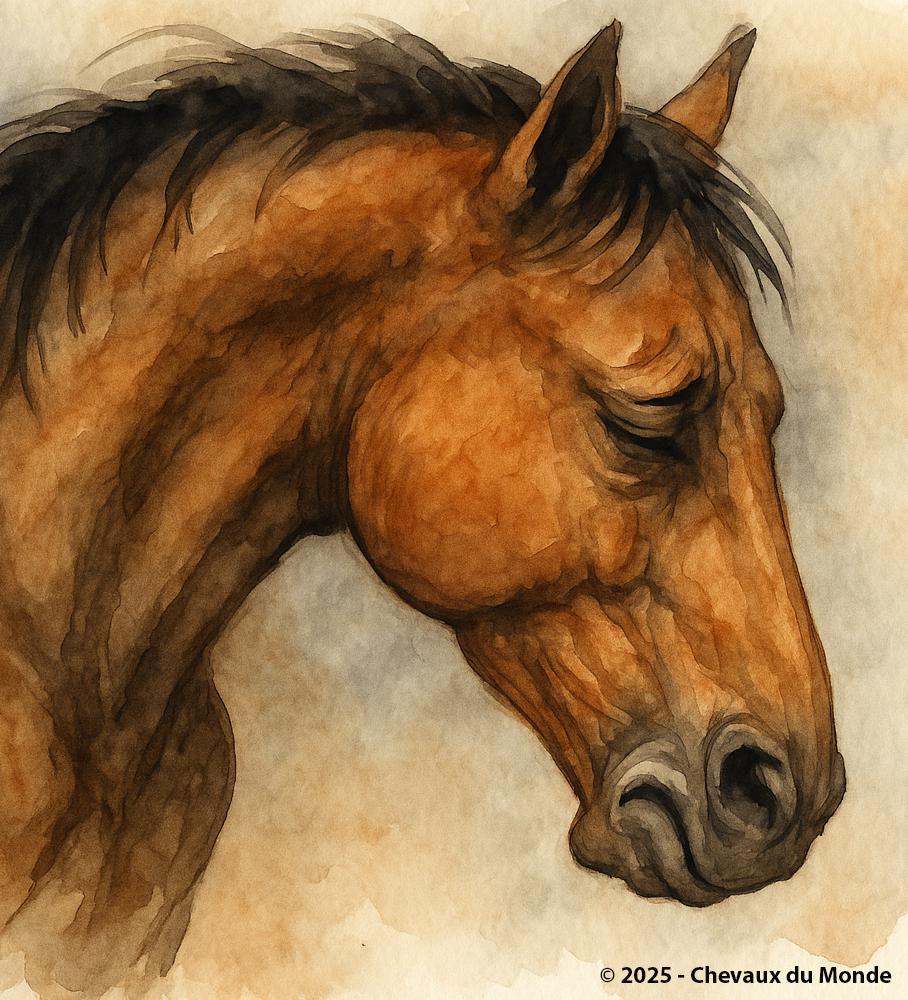
Silent language: horses don’t cry out — they show pain through subtle signals that every owner should learn to recognize.
Pain in horses is often difficult to detect, as this prey animal tends to hide its weaknesses. However, knowing how to recognize signs of suffering is essential to ensure its well-being, prevent serious pathologies, and intervene quickly.
Understanding Pain in Horses
Why do horses hide their pain?
- Prey animal: showing weakness exposes it to predators.
- Evolutionary adaptation: the horse protects itself by concealing symptoms.
Types of Pain
- Acute pain: sudden, intense, often linked to an accident or colic.
- Chronic pain: persistent, associated with diseases such as arthritis.
- Neuropathic pain: caused by nerve damage.
Behavioral Signs
Changes in Attitude
- Apathy, horse less reactive than usual.
- Sudden aggression towards humans or other horses.
- Refusal to move or work.
Posture Changes
- Stretched-out stance (forelimbs or hindlimbs abnormally advanced or shifted back).
- Arched or tense back.
- Weight shifting from one limb to another.
Abnormal Behaviors
- Pawing the ground, kicking at the belly (colic).
- Repetitive head movements.
- Excessive rubbing against walls.
Physical Signs
Facial Expressions (Horse Grimace)
The Horse Grimace Scale (HGS) project identified specific indicators:
- Ears pinned back or asymmetrical.
- Fixed gaze, hollow orbital area.
- Dilated nostrils.
- Tense lips, contracted chin.
Physiological Parameters
- Increased heart and respiratory rates.
- Excessive sweating without exertion.
- Muscle tremors.
Locomotion
- Visible or subtle lameness.
- Reluctance to move straight or in circles.
- Uneven or stiff gaits.
Digestive Signs
Colic (veterinary emergency)
- Horse lying down and getting up repeatedly.
- Looking at its flank.
- Refusal to eat or drink.
Other Disorders
- Progressive weight loss.
- Decreased appetite.
- Abnormal droppings (hard, liquid, or very dry).
Tools and Methods to Assess Pain
Regular Observation
- Compare the horse to its usual behavior.
- Record any changes in a tracking notebook.
Pain Scales
- HGS (Horse Grimace Scale) for facial evaluation.
- Composite Pain Scale (mix of behavioral and physiological criteria).
Veterinary Support
- Complete clinical examination.
- Medical imaging (X-ray, ultrasound).
- Blood tests or additional exams.
Importance of Early Detection
- Improve well-being: prompt intervention avoids unnecessary suffering.
- Prevent complications: colic treated too late can be fatal.
- Optimize performance: a pain-free horse is more available physically and mentally.
Conclusion
Recognizing pain in horses requires observation, patience, and knowledge of its usual behavior. Signs are often subtle, but early detection allows better care and directly contributes to the horse’s well-being and longevity.

